First Drive: 2011 Ford Explorer
Exploring new worlds
In the search for fuel economy, Ford's iconic Explorer evolves from SUV to crossover
By John LeBlanc SAN DIEGO, Calif. - You would be forgiven if you thought Ford's decision to move its Explorer to a car-like unibody chassis after riding for a quarter-century on a body-on-frame truck-style chassis is late. After all, it's a move that most automakers started making a half-decade ago.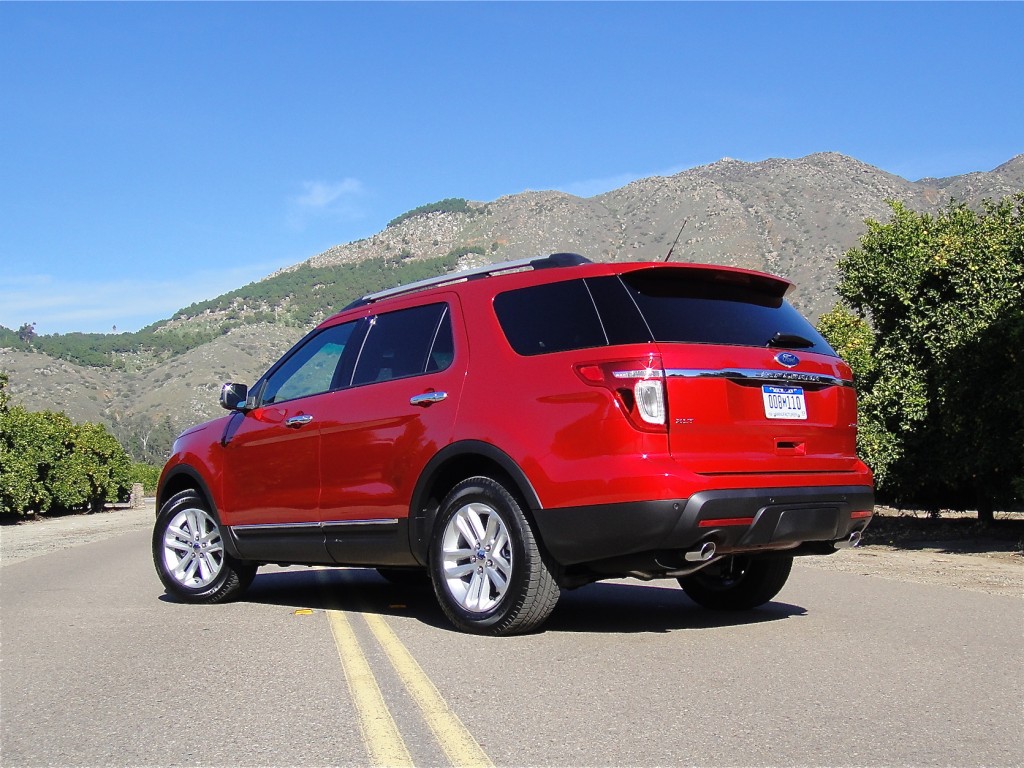 And while we're not too sure why it took so long, we can say that Ford's decision to do so is right in line with what customers want: better fuel economy, more spacious interiors and more sophisticated driving dynamics. These are the primary reasons consumers have migrated from SUVs (like previous Explorers) into CUVs like the Toyota Highlander and Honda Pilot, which are more or less the gold standards for the three-row crossover class.
True, Ford has been building crossovers for quite some while - its three-row crossover regime started back in 2005 with the Freestyle, followed by 2008's Taurus X, and the 2009 full-size Flex. But over the course of its five-generation career, the Explorer has slid from a pinnacle of 500,000 sales annually to one-tenth that today.
Despite the shift to crossover status, the Explorer is still one of the largest CUVs you can buy today. It offers seating for up to seven passengers, with prices ranging from $32,999 for a 4WD Explorer, although, for the first time ever, you can get a front-wheel drive version (gasp) for a dollar short of $30k. For those that like their toys, the all-singing and dancing Explorer Limited 4WD starts at $44,199.
And while we're not too sure why it took so long, we can say that Ford's decision to do so is right in line with what customers want: better fuel economy, more spacious interiors and more sophisticated driving dynamics. These are the primary reasons consumers have migrated from SUVs (like previous Explorers) into CUVs like the Toyota Highlander and Honda Pilot, which are more or less the gold standards for the three-row crossover class.
True, Ford has been building crossovers for quite some while - its three-row crossover regime started back in 2005 with the Freestyle, followed by 2008's Taurus X, and the 2009 full-size Flex. But over the course of its five-generation career, the Explorer has slid from a pinnacle of 500,000 sales annually to one-tenth that today.
Despite the shift to crossover status, the Explorer is still one of the largest CUVs you can buy today. It offers seating for up to seven passengers, with prices ranging from $32,999 for a 4WD Explorer, although, for the first time ever, you can get a front-wheel drive version (gasp) for a dollar short of $30k. For those that like their toys, the all-singing and dancing Explorer Limited 4WD starts at $44,199.
 At the top of Ford's list of things to improve with the Explorer was fuel economy. Moving to a Volvo-sourced platform shaved about 45 kg off the curb weight compared to the old Explorer, as did limiting the size of the engines. Whereas the new Dodge Durango can be had with a V6 or a V8, the only engine available in the Ford is the brand's familiar 3.5-litre V6, which is rated at 290 horsepower and 255 lb.-ft. of torque. Matched to a six-speed automatic, it's rated at 11.9 L/100 km in the city and 8.0 L/100 km on the highway, making it some 20 per cent more fuel-frugal than the outgoing Explorer V6, not to mention more miserly than the V6-powered Pilot, Traverse and Highlander.
Mission accomplished on the fuel economy front. But Jim Holland, chief engineer for the Explorer confirmed that an even more parsimonious 2.0-litre EcoBoost turbocharged four-cylinder with 237 hp and 250 lb.-ft. will be available during 2011. There are two caveats to keep in mind, though: It'll only be available on front-drive models, and it will command a premium price over the standard V6 for the added fuel-saving benefits.
Holland fully admits that customers buy SUVs instead of crossovers to go off-road and to tow, even if they don't do that every day. So to assuage any concerns that the 2011 is just a jacked-up station wagon, and to give customers a clear reason to buy one over a Flex, Ford has gone out of its way to infuse the Explorer with some additional SUV ability.
At the top of Ford's list of things to improve with the Explorer was fuel economy. Moving to a Volvo-sourced platform shaved about 45 kg off the curb weight compared to the old Explorer, as did limiting the size of the engines. Whereas the new Dodge Durango can be had with a V6 or a V8, the only engine available in the Ford is the brand's familiar 3.5-litre V6, which is rated at 290 horsepower and 255 lb.-ft. of torque. Matched to a six-speed automatic, it's rated at 11.9 L/100 km in the city and 8.0 L/100 km on the highway, making it some 20 per cent more fuel-frugal than the outgoing Explorer V6, not to mention more miserly than the V6-powered Pilot, Traverse and Highlander.
Mission accomplished on the fuel economy front. But Jim Holland, chief engineer for the Explorer confirmed that an even more parsimonious 2.0-litre EcoBoost turbocharged four-cylinder with 237 hp and 250 lb.-ft. will be available during 2011. There are two caveats to keep in mind, though: It'll only be available on front-drive models, and it will command a premium price over the standard V6 for the added fuel-saving benefits.
Holland fully admits that customers buy SUVs instead of crossovers to go off-road and to tow, even if they don't do that every day. So to assuage any concerns that the 2011 is just a jacked-up station wagon, and to give customers a clear reason to buy one over a Flex, Ford has gone out of its way to infuse the Explorer with some additional SUV ability.
 Although you'd be insane to take it up the Rubicon Trail, Ford says the 2011 Explorer has best-in-class ground clearance. In place of the traditional transfer case knob, 4WD models get the new Terrain Management system, a feature inspired from Ford's days of Land Rover ownership. Via a console-mounted dial, Explorer drivers can select one of three settings (sand, snow, mud) for easy off-roading, with a default mode for pavement. Like the Terrain Response system in Land Rovers, the system adjusts throttle response and stability-control settings. It also adds a hill-descent mode. The only thing that's missing is a rock-climbing mode, but Amy Marentic, Ford's group marketing manager said Explorer customers "do not climb rocks." Fair enough.
What the new Explorer 4WD system does do is remove some of the guesswork from the traditional SUV off-road decision making. The system was designed to help drivers get to their favourite vacation spots, like the cottage or up to the ski hill, even if unplanned weather has created less-than-ideal road conditions. "Our customers don't know the difference between 4Hi or 4Lo, but they do know if it's raining or snowing outside," said Marentic.
In terms of towing, Ford says the 2011 Explorer meets 99.6 per cent of old Explorer customers' towing needs, despite the fact that outright towing capacity is down from 7,000 lbs. When equipped to Class III spec, it can still haul up to 5,000 lbs, a duty made easier by trailer sway control. Hitching up is also easier thanks to a rear-view camera with a zoom function.
Although you'd be insane to take it up the Rubicon Trail, Ford says the 2011 Explorer has best-in-class ground clearance. In place of the traditional transfer case knob, 4WD models get the new Terrain Management system, a feature inspired from Ford's days of Land Rover ownership. Via a console-mounted dial, Explorer drivers can select one of three settings (sand, snow, mud) for easy off-roading, with a default mode for pavement. Like the Terrain Response system in Land Rovers, the system adjusts throttle response and stability-control settings. It also adds a hill-descent mode. The only thing that's missing is a rock-climbing mode, but Amy Marentic, Ford's group marketing manager said Explorer customers "do not climb rocks." Fair enough.
What the new Explorer 4WD system does do is remove some of the guesswork from the traditional SUV off-road decision making. The system was designed to help drivers get to their favourite vacation spots, like the cottage or up to the ski hill, even if unplanned weather has created less-than-ideal road conditions. "Our customers don't know the difference between 4Hi or 4Lo, but they do know if it's raining or snowing outside," said Marentic.
In terms of towing, Ford says the 2011 Explorer meets 99.6 per cent of old Explorer customers' towing needs, despite the fact that outright towing capacity is down from 7,000 lbs. When equipped to Class III spec, it can still haul up to 5,000 lbs, a duty made easier by trailer sway control. Hitching up is also easier thanks to a rear-view camera with a zoom function.
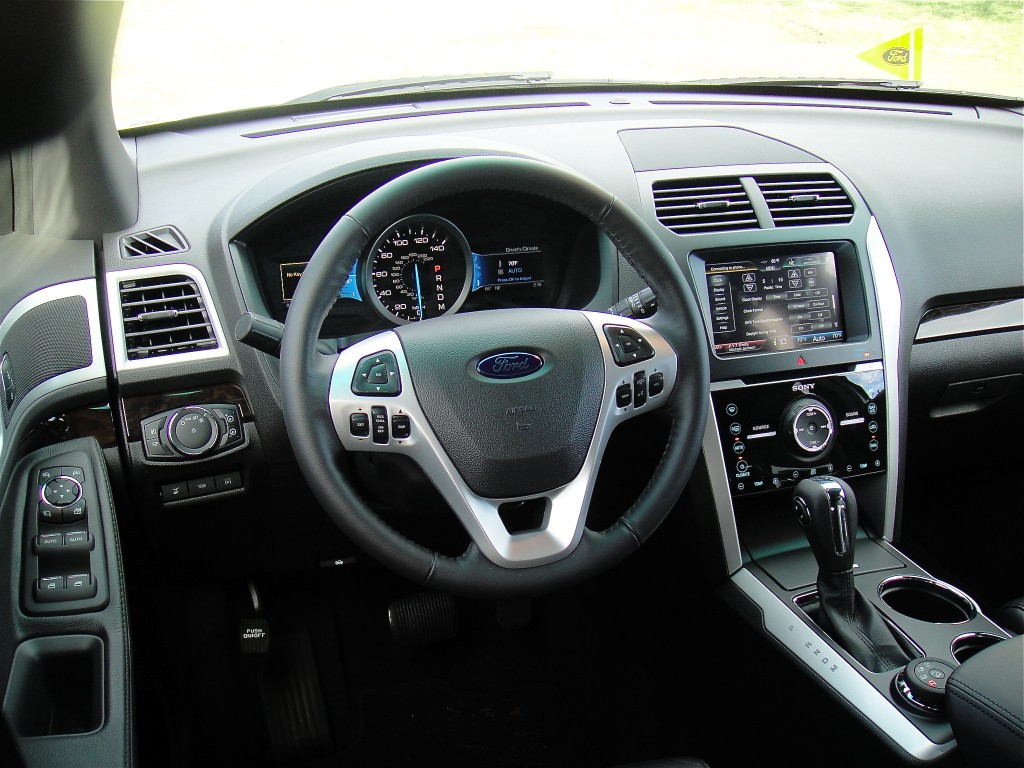 What previous Explorer owners will have no problem appreciating is the 2011 model's roomier and more luxurious cabin. Although there's less second-row legroom than in the limo-like Flex, the Explorer is wider. En route from the airport to the event, we were shuttled around in a 2010 Explorer, which felt a size narrower than the new model. There's also no shortage of headroom - hat-wearers, rejoice. Thanks to an overall length-gain, there's also more cargo space - Ford says the room behind an erected third-row is best in class.
If not as rich and detailed as the new Durango, the Explorer's interior fit and finish leads the rest of its class. Much the same can be said about its in-car gadgets and technologies. As introduced in the updated-for-2011 Ford Edge, the Explorer gains the MyFord Touch driver interface technology with LCD instruments and touch-sensitive controls, plus the latest version of the Sync for voice-activated control of your cell phone and USB media device. One new interior feature that's sure to capture the attention of the safety-obsessed is inflatable rear seatbelts, which deploy to reduce torso injury in severe crashes.
Although urban drivers may find its girth something of a challenge in tight spots, and so-so rearward visibility, beyond the gains in interior space efficiency and fuel economy, the biggest improvement with the evolution of the Explorer from SUV to CUV is in the way it drives.
Take its steering for example. Off-centre response and weight build-up are quite accurate and surprisingly meaty. The transition to crossover form has endowed the Explorer with a flatter ride than in its prior SUV form; vertical pitch and dive over undulating surfaces is much better controlled. Not only is it miles better than the old Explorer, it's also a step forward from the Flex. The Explorer also boasts Ford's first application of Curve Control, which can sense when the vehicle is entering into a corner too quickly; it's capable of applying four-wheel braking to reduce speed by up to 16 km/h. Standard across the board, it's present to help prevent rollovers on highway off-ramps.
What previous Explorer owners will have no problem appreciating is the 2011 model's roomier and more luxurious cabin. Although there's less second-row legroom than in the limo-like Flex, the Explorer is wider. En route from the airport to the event, we were shuttled around in a 2010 Explorer, which felt a size narrower than the new model. There's also no shortage of headroom - hat-wearers, rejoice. Thanks to an overall length-gain, there's also more cargo space - Ford says the room behind an erected third-row is best in class.
If not as rich and detailed as the new Durango, the Explorer's interior fit and finish leads the rest of its class. Much the same can be said about its in-car gadgets and technologies. As introduced in the updated-for-2011 Ford Edge, the Explorer gains the MyFord Touch driver interface technology with LCD instruments and touch-sensitive controls, plus the latest version of the Sync for voice-activated control of your cell phone and USB media device. One new interior feature that's sure to capture the attention of the safety-obsessed is inflatable rear seatbelts, which deploy to reduce torso injury in severe crashes.
Although urban drivers may find its girth something of a challenge in tight spots, and so-so rearward visibility, beyond the gains in interior space efficiency and fuel economy, the biggest improvement with the evolution of the Explorer from SUV to CUV is in the way it drives.
Take its steering for example. Off-centre response and weight build-up are quite accurate and surprisingly meaty. The transition to crossover form has endowed the Explorer with a flatter ride than in its prior SUV form; vertical pitch and dive over undulating surfaces is much better controlled. Not only is it miles better than the old Explorer, it's also a step forward from the Flex. The Explorer also boasts Ford's first application of Curve Control, which can sense when the vehicle is entering into a corner too quickly; it's capable of applying four-wheel braking to reduce speed by up to 16 km/h. Standard across the board, it's present to help prevent rollovers on highway off-ramps.
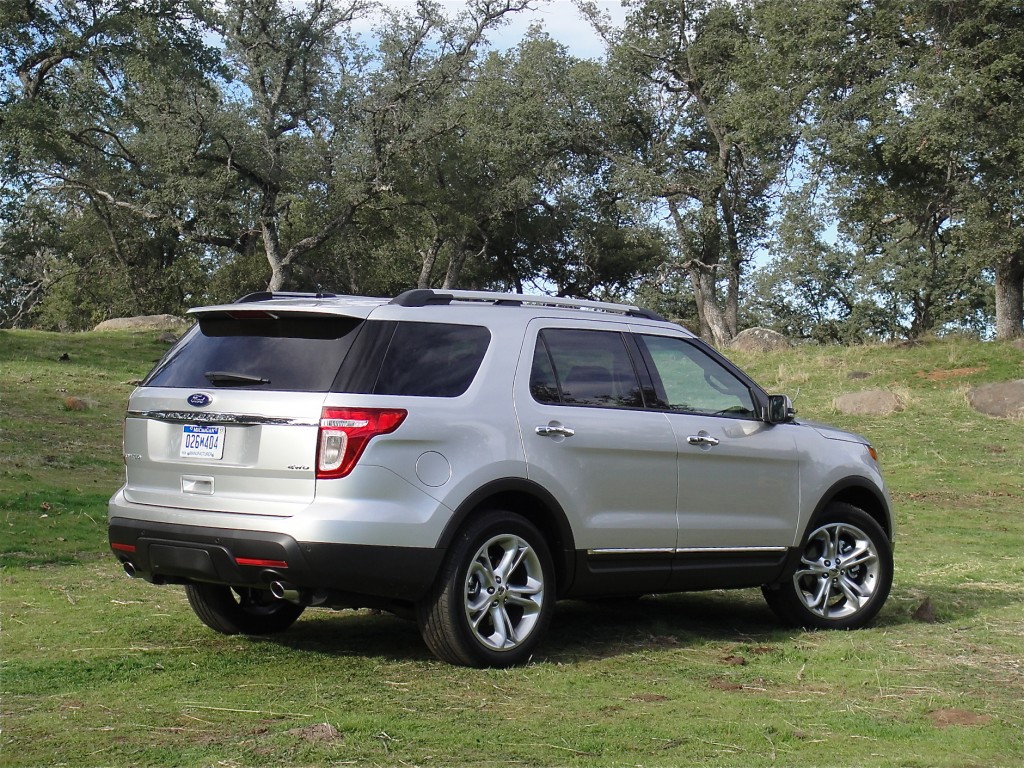 Refinement is up too. Though its wheelbase is ever so slightly shorter than the outgoing model, the Explorer rides smoothly - it's never harsh. And like the new Edge, Ford has worked to reduce wind and road noise, with officials claiming it to be quieter than the Pilot.
While the Explorer is more capable of arcing around off-ramps, it doesn't generate much excitement on on-ramps. On paper, the V6 is competitive, but it sounds over-stressed when called upon. Ford really ought to offer the 355-hp, 350 lb.-ft. of torque EcoBoost turbocharged V6 offered in the Flex and Lincoln MKT, which would make a solid addition to the Explorer's lineup, particularly for those who don't have fuel-efficiency at the top of their must-have list.
Even though the Explorer has seen a formidable sales slide over the years, it is still Ford's most recognizable nameplate, following the Mustang and F-Series trucks. And with more than 140,000 Explorer customers re-entering the market in search of a new vehicle every year, a smarter vehicle in line with changing consumer tastes could help keep them in the Ford family.
In the end, while the new 2011 Explorer isn't revolutionary as a crossover, it marks a huge improvement for the nameplate. It has the fuel economy and driving dynamics to please crossover buyers, while maintaining most of its towing and off-roading abilities. The big question remaining is whether or not SUV-lovers will come to accept a car-based Explorer.
Refinement is up too. Though its wheelbase is ever so slightly shorter than the outgoing model, the Explorer rides smoothly - it's never harsh. And like the new Edge, Ford has worked to reduce wind and road noise, with officials claiming it to be quieter than the Pilot.
While the Explorer is more capable of arcing around off-ramps, it doesn't generate much excitement on on-ramps. On paper, the V6 is competitive, but it sounds over-stressed when called upon. Ford really ought to offer the 355-hp, 350 lb.-ft. of torque EcoBoost turbocharged V6 offered in the Flex and Lincoln MKT, which would make a solid addition to the Explorer's lineup, particularly for those who don't have fuel-efficiency at the top of their must-have list.
Even though the Explorer has seen a formidable sales slide over the years, it is still Ford's most recognizable nameplate, following the Mustang and F-Series trucks. And with more than 140,000 Explorer customers re-entering the market in search of a new vehicle every year, a smarter vehicle in line with changing consumer tastes could help keep them in the Ford family.
In the end, while the new 2011 Explorer isn't revolutionary as a crossover, it marks a huge improvement for the nameplate. It has the fuel economy and driving dynamics to please crossover buyers, while maintaining most of its towing and off-roading abilities. The big question remaining is whether or not SUV-lovers will come to accept a car-based Explorer.
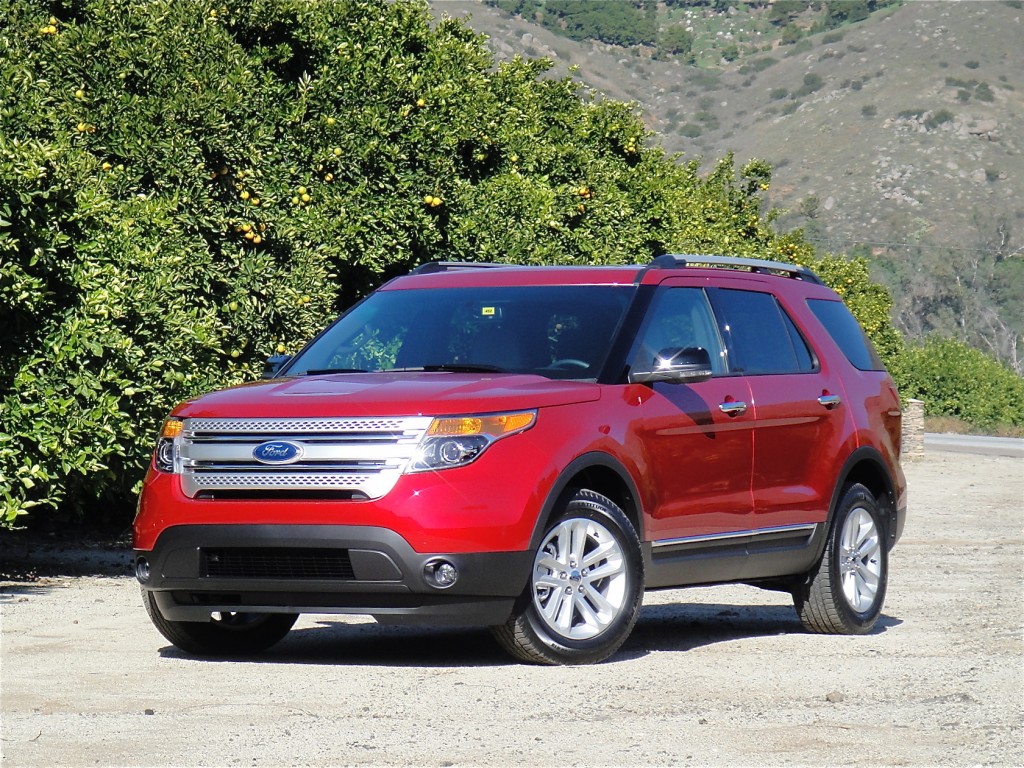 2011 Ford Explorer
WHAT I LIKED: Roomy cabin with lots of available in-car infotainment features; refined and quiet driving experience; SUV-like off-road and towing capabilities, crossover-like fuel economy.
WHAT I DIDN'T: On the large side for urban use; former V8 Explorer owners may want more grunt; rear styling diminishes rear visibility.
Base price: $29,999 - $44,199
Type of vehicle: FWD or AWD full-size crossover
Engine: 3.5L, 24-valve DOHC V6
Power/Torque: 290 hp/255 lb.-ft.
Transmission: Six-speed automatic
Fuel consumption (city/hwy): 11.9 / 8.0 L/100 km
Competition: Chevrolet Traverse, Dodge Durango, GMC Acadia, Honda Pilot, Kia Borrego, Mazda CX-9, Nissan Pathfinder, Toyota Highlander, Volvo XC90
2011 Ford Explorer
WHAT I LIKED: Roomy cabin with lots of available in-car infotainment features; refined and quiet driving experience; SUV-like off-road and towing capabilities, crossover-like fuel economy.
WHAT I DIDN'T: On the large side for urban use; former V8 Explorer owners may want more grunt; rear styling diminishes rear visibility.
Base price: $29,999 - $44,199
Type of vehicle: FWD or AWD full-size crossover
Engine: 3.5L, 24-valve DOHC V6
Power/Torque: 290 hp/255 lb.-ft.
Transmission: Six-speed automatic
Fuel consumption (city/hwy): 11.9 / 8.0 L/100 km
Competition: Chevrolet Traverse, Dodge Durango, GMC Acadia, Honda Pilot, Kia Borrego, Mazda CX-9, Nissan Pathfinder, Toyota Highlander, Volvo XC90
Comments
One Response to “First Drive: 2011 Ford Explorer”





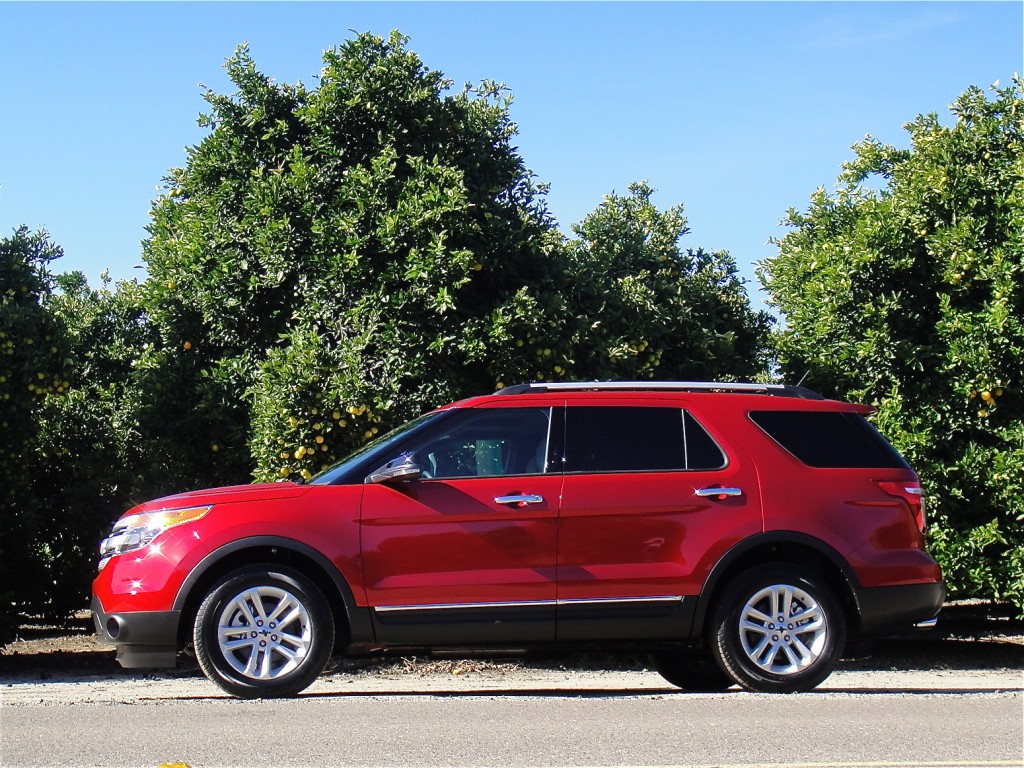
February 7th, 2011 @ 4:19 pm
[…] had the chance to spend a day with the 2011 Explorer recently. From a hardware standpoint or the way it drives, there’s nothing all that revolutionary […]